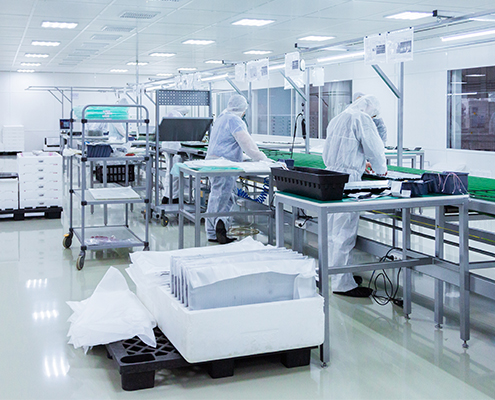The main purpose of the negative pressure isolation room is to separate the patient from the surrounding environment and people, avoid direct contact with the body or air exchange, and prevent cross-infection.
The main building of the negative pressure isolation room must reach the airtight level, and the gap between the electromechanical system and the structure must be carefully handled through the room. Airtight ceilings are generally installed in negative pressure isolation rooms to provide airtight protection. During maintenance, if the ceiling is opened, the effectiveness of the air tightness may be reduced, and the air tightness test must be performed again according to the American ASTM E779-1 standard, because the airtightness of the negative pressure isolation room is extremely important.
Since the air pressure of the negative pressure isolation room is lower than the outside world, only fresh air from outside can flow into the ward, and the air contaminated by the patient in the ward will not leak out directly, then will be discharged to the waste through a special pipeline in time processing equipment. It can be said that the negative pressure isolation room is like a space completely isolated by a “mask”, and the place outside the ward will not be contaminated at all, so that medical staff can safely carry out activities outside the ward, reducing the possibility of a large number of infections. This kind of ward is most suitable for treating patients with respiratory infections like SARS.
The negative pressure isolation room is not just a room, but is composed of three parts: a ward, a buffer room, and a bathroom. The pressure difference in each room is -5Pa from the inside to the outside.
Some people may worry that if the room is under negative pressure, will the patient have difficulty breathing? Of course not. Although the pressure is lower than the outside world, it is only 15Pa less. The atmospheric pressure on the ground is generally around 100KPa, and changes in tens of Pa will not affect the patient’s breathing at all. On the contrary, through the careful care of the fresh air system, the patient can better recover the body and get rid of the disease.
In order to keep the various ventilation equipment in the ward running normally, a micro-pressure gauge should be installed in the ward, buffer zone, and bathroom door, and a dedicated person should record it regularly to ensure that the indoor pressure difference fails.



